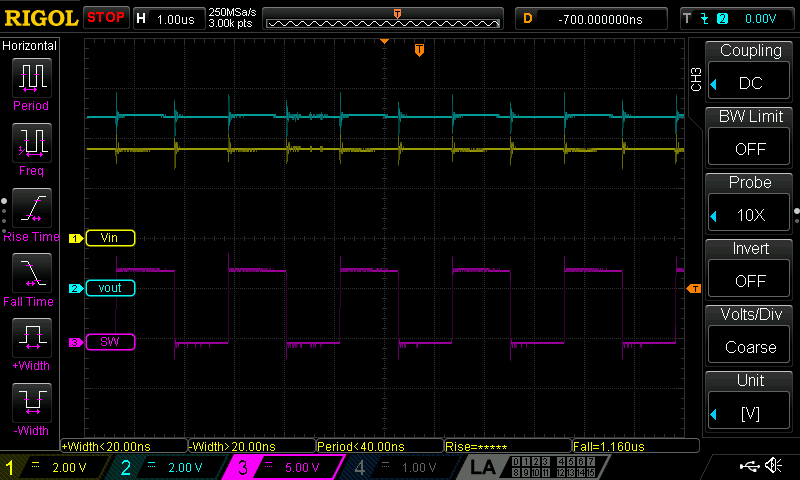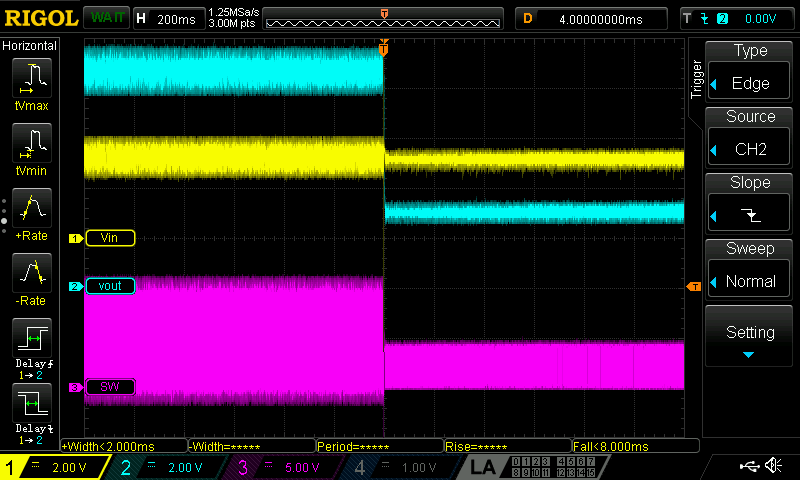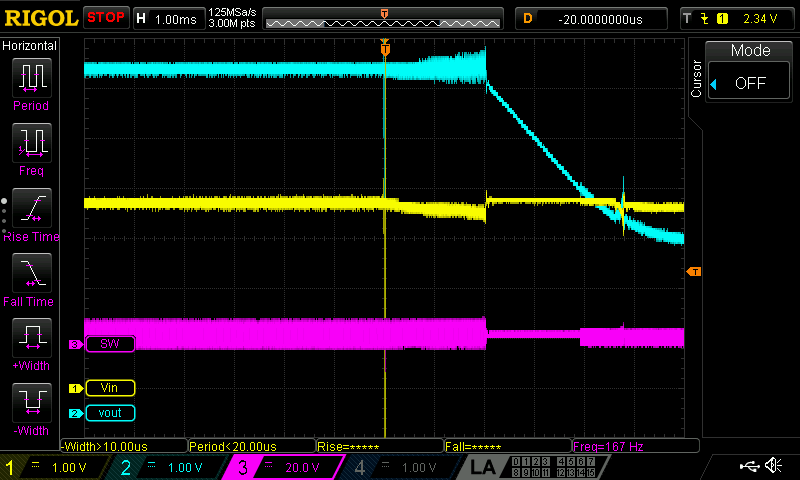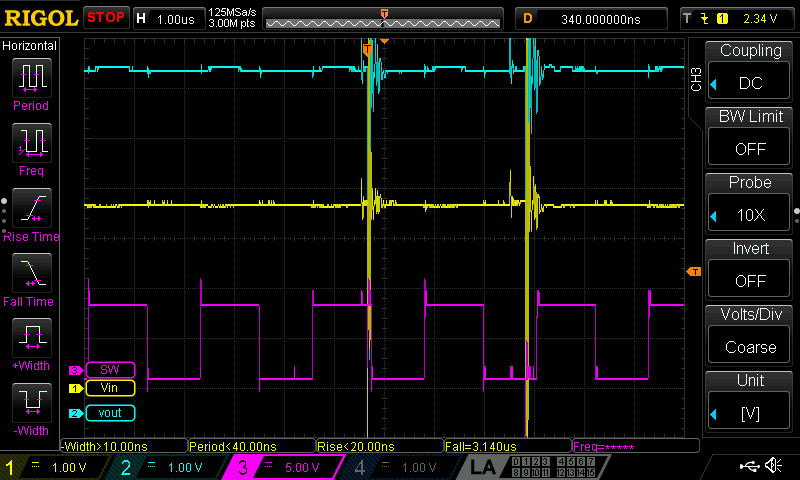Tool/software: WEBENCH® Design Tools
Hi folks!
I've a trouble with a DC/DC TPS611781RNWR device. I've configured it as step-up from 2.7V - 4.2V to 6V, from a LiPo.
I want to feed two DC motors with about 1A each one. I've designed it with the reference values from the WEBENCH.
The circuit looks okay, and the voltage without load it's 6.04V, so it's okay.
But, the problems come when I turn on one motor, the current isn't enough to run it, and the voltage goes down near to the main voltage input. From 6.04V to 3.83V, when the main is 3.7V.
I can imagine, that the problem is in the DC/DC current limit resistor. It doesn't generate enough current to feed the motors, and that's why the step-up doesn't work. But, certainly, I don't really sure what's happening.
I attach here the reference configuration from the WEBENCH.
My schema...
If someone need more information, I don't have any problem to upload it.
Thanks in advance!










